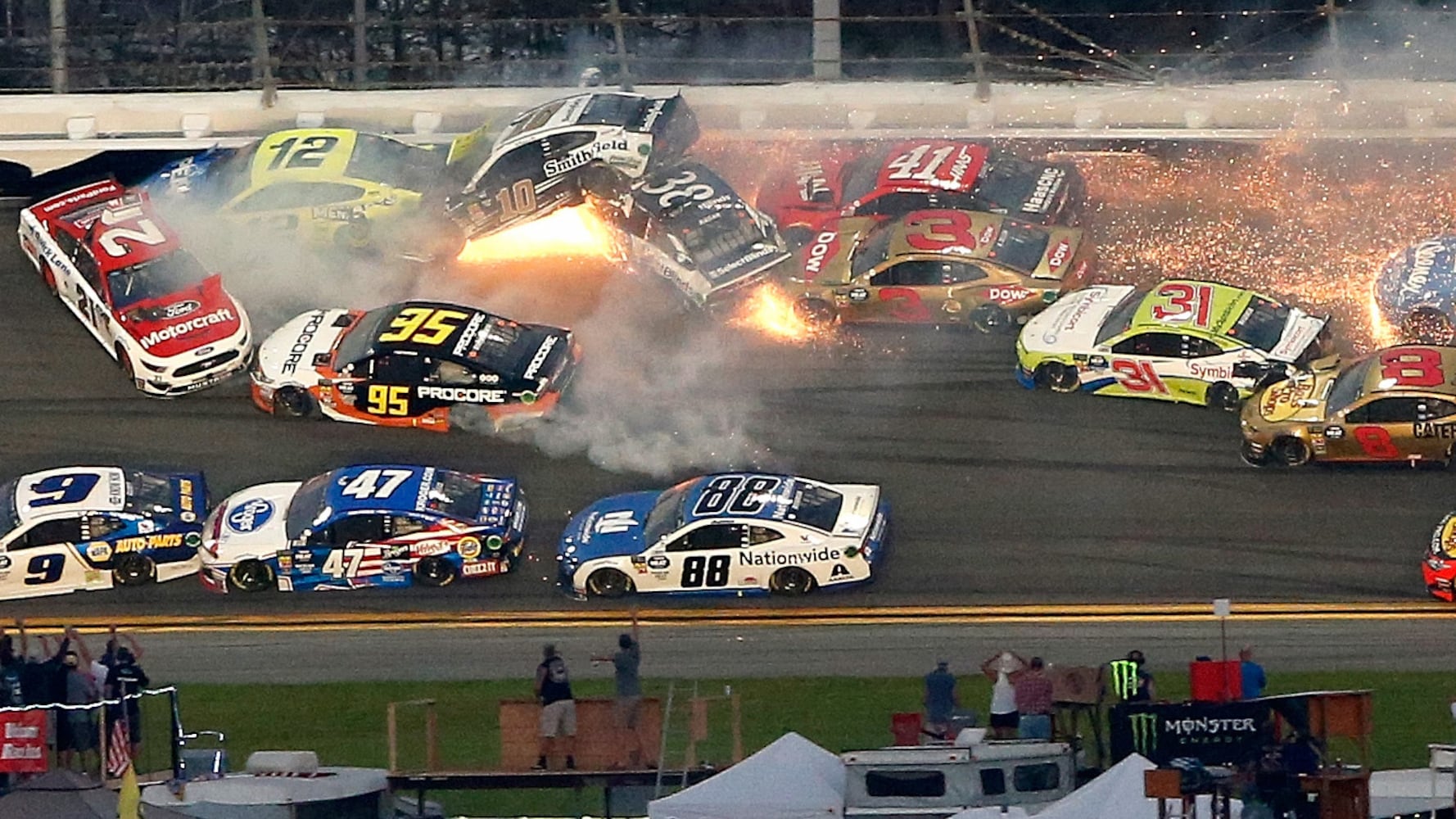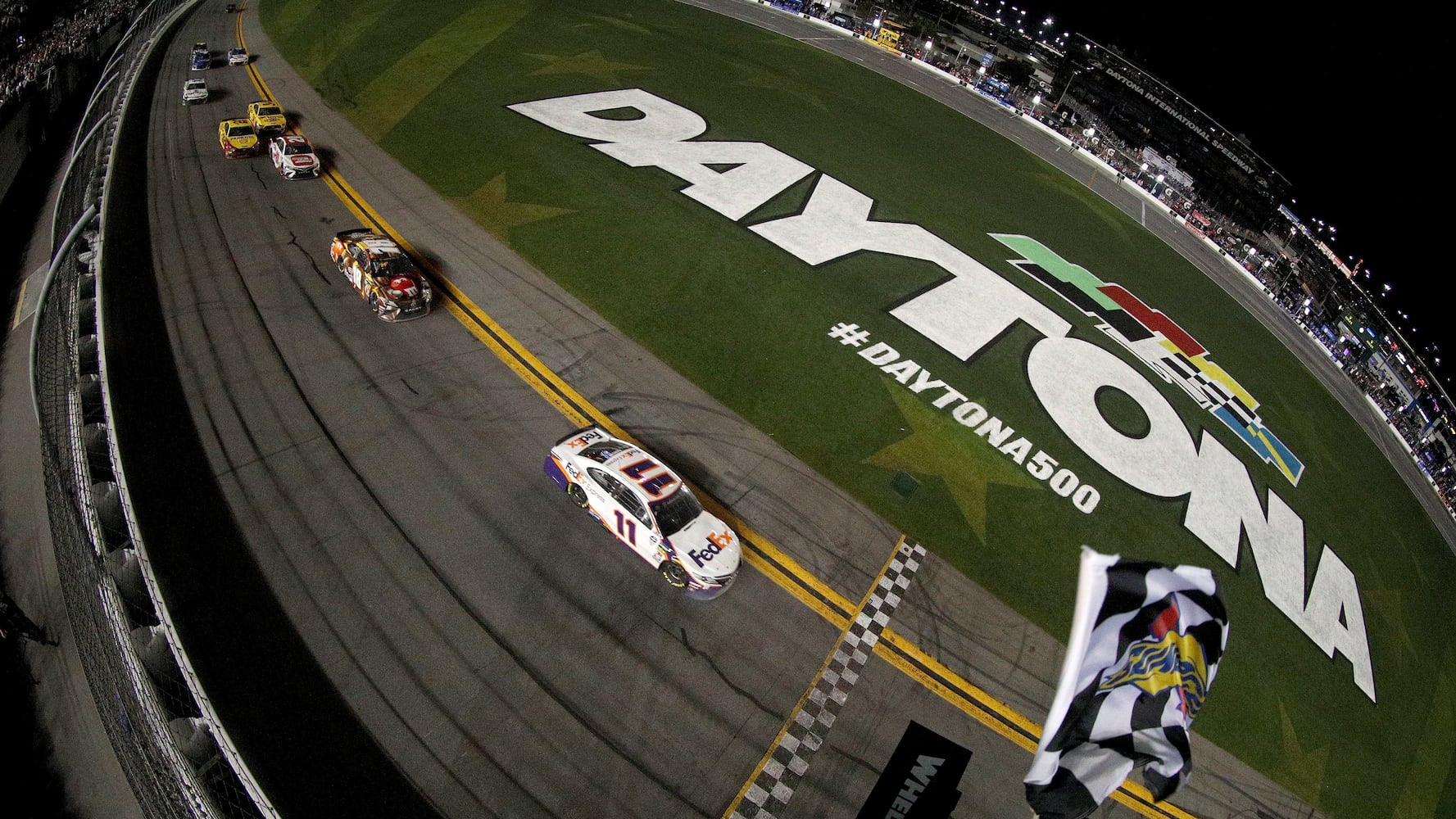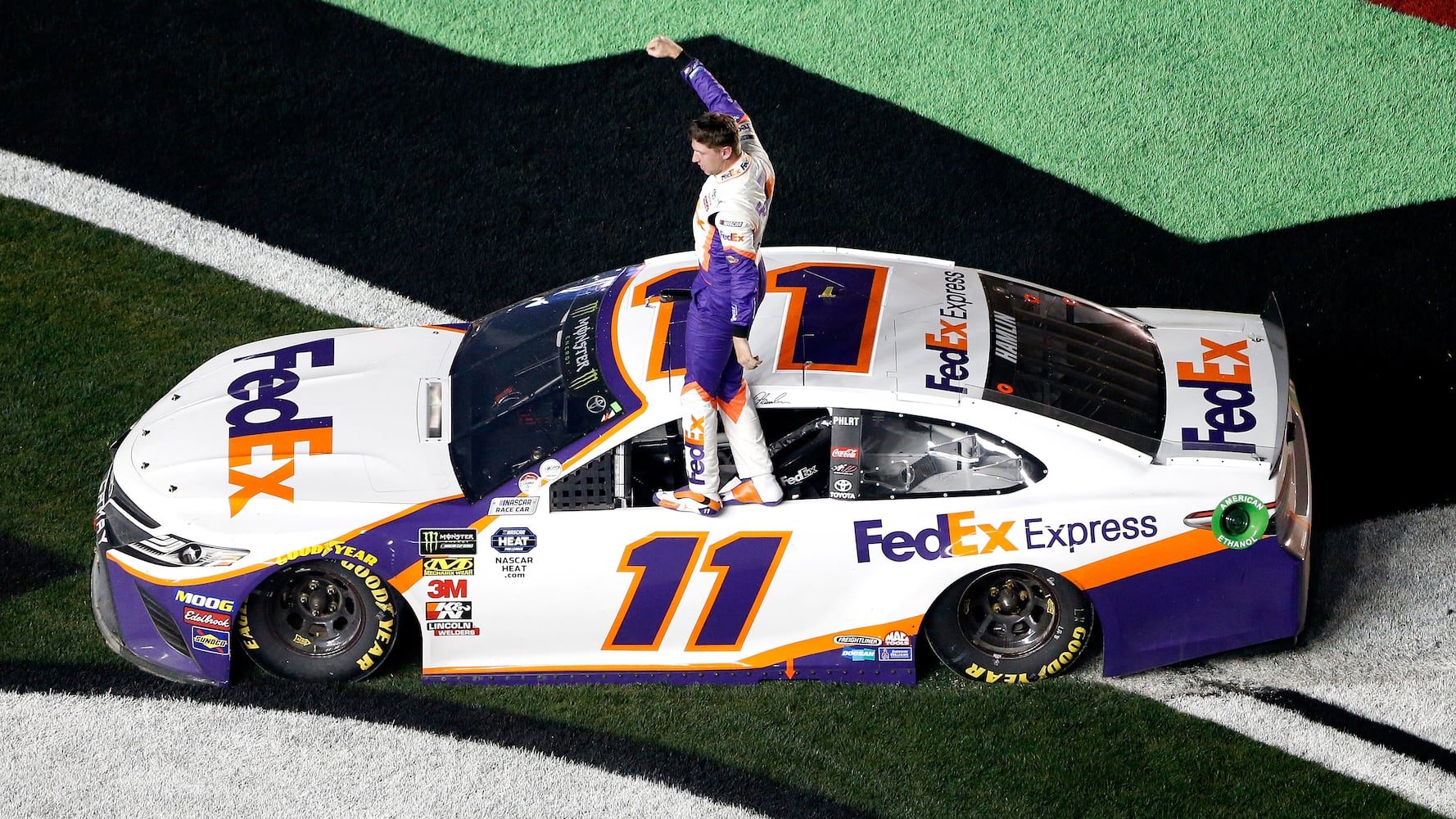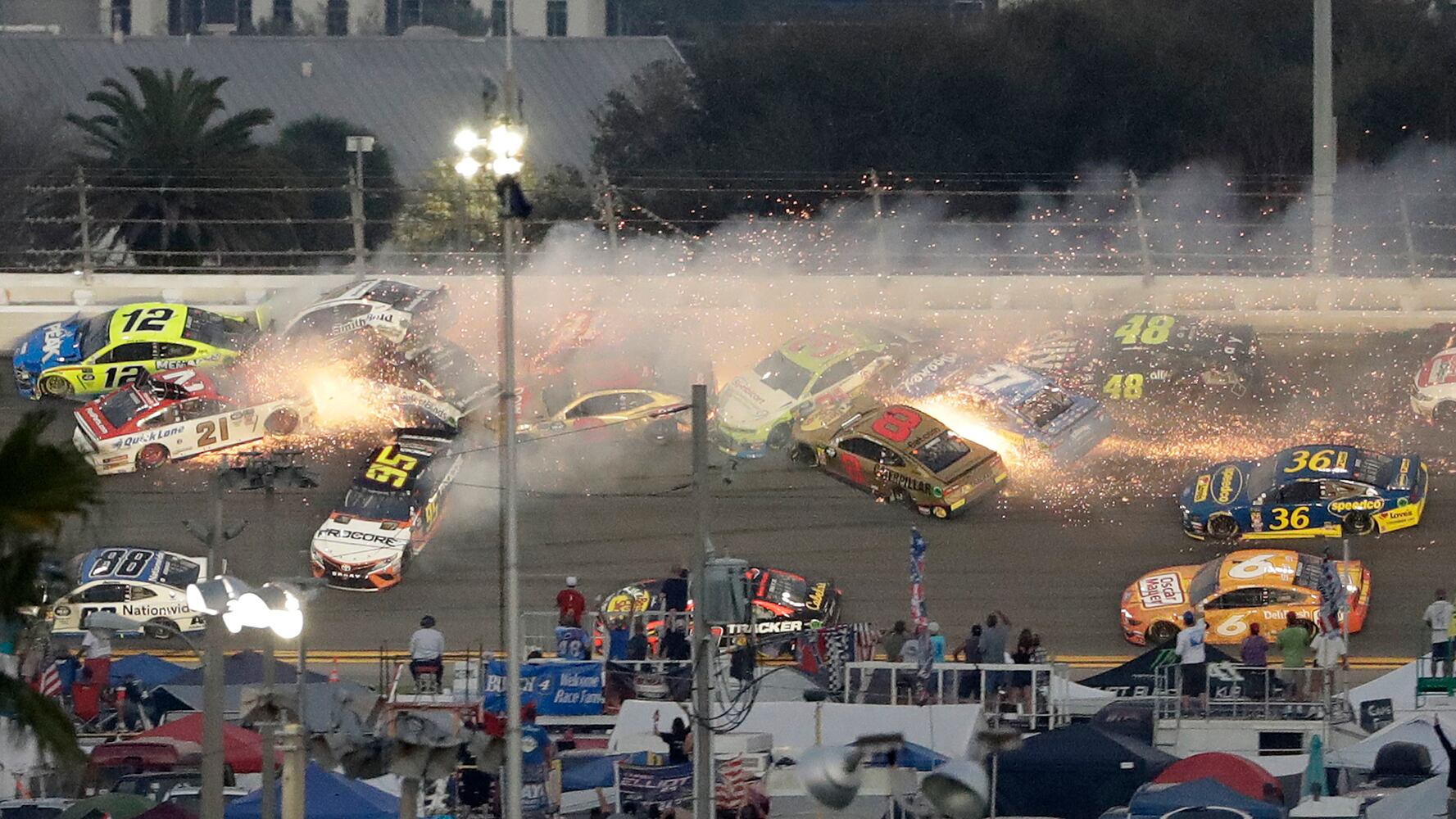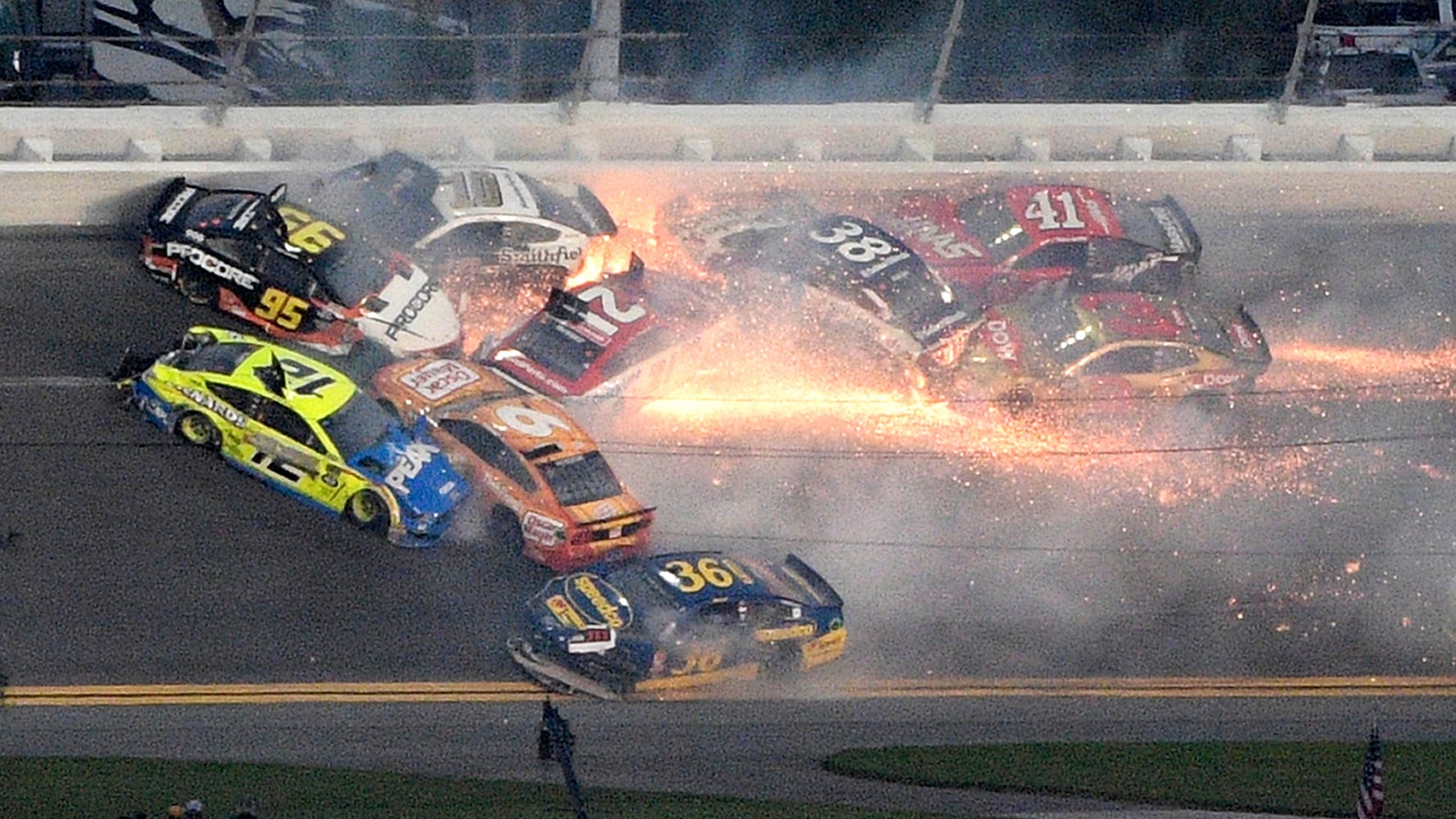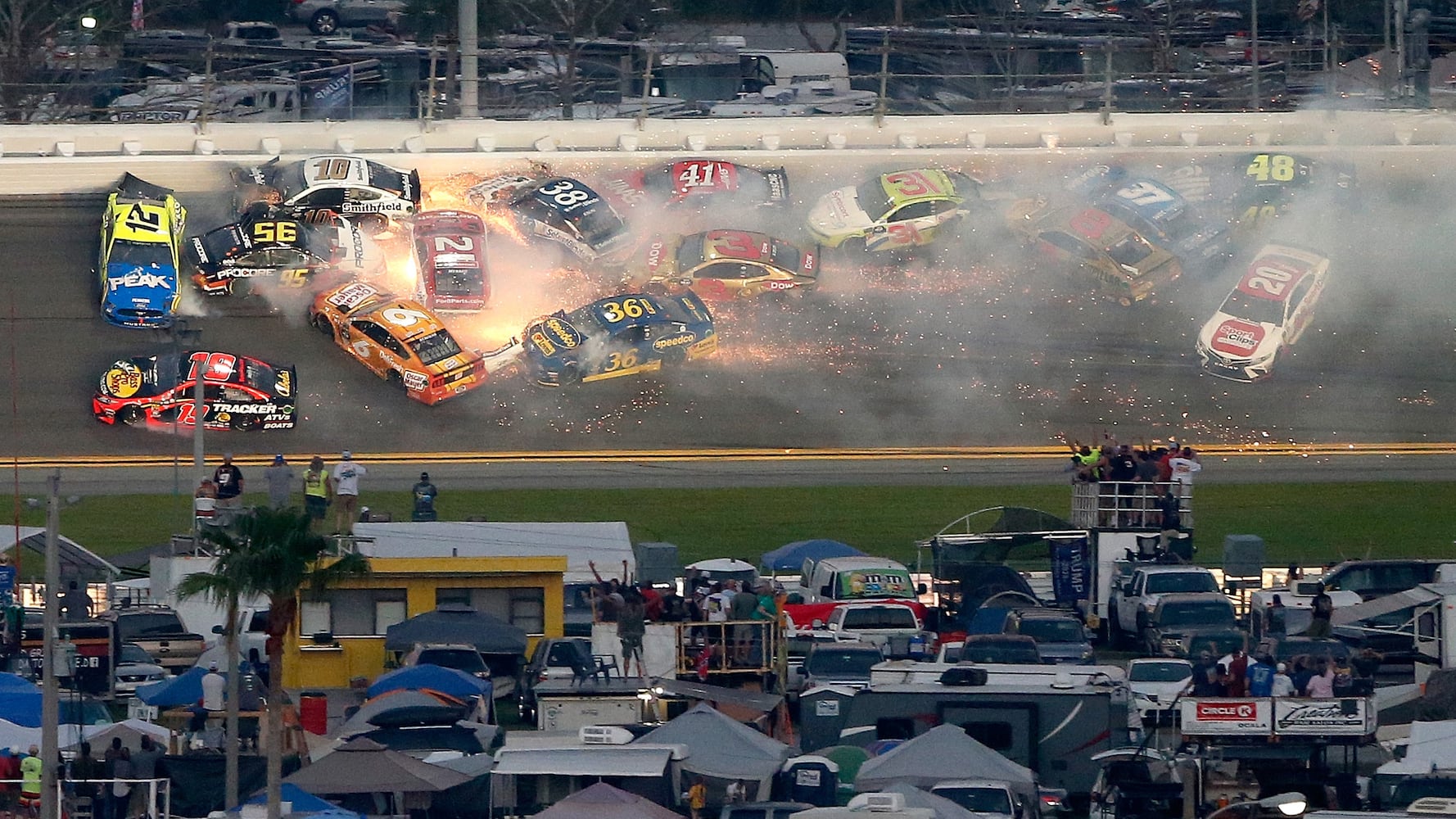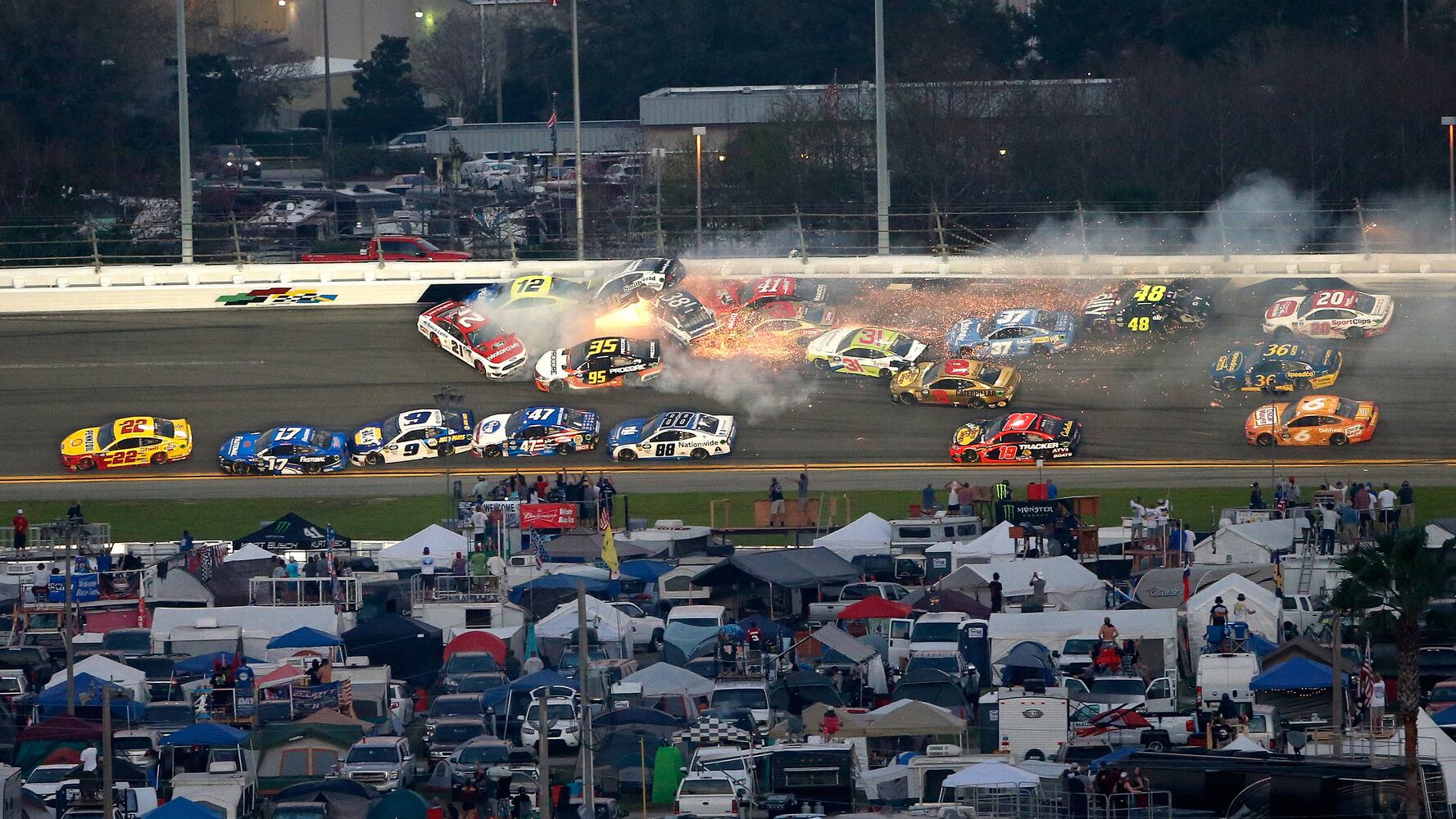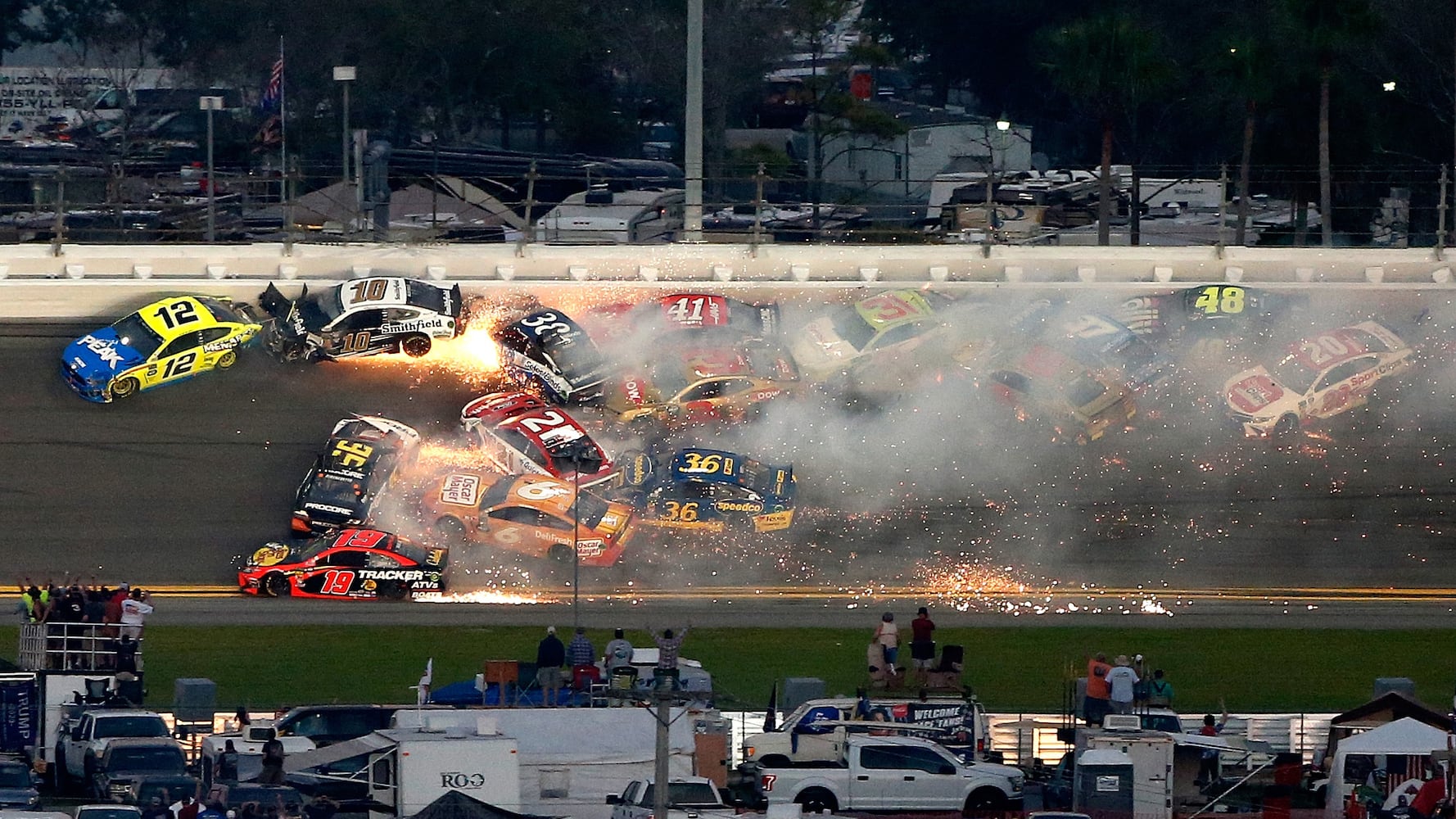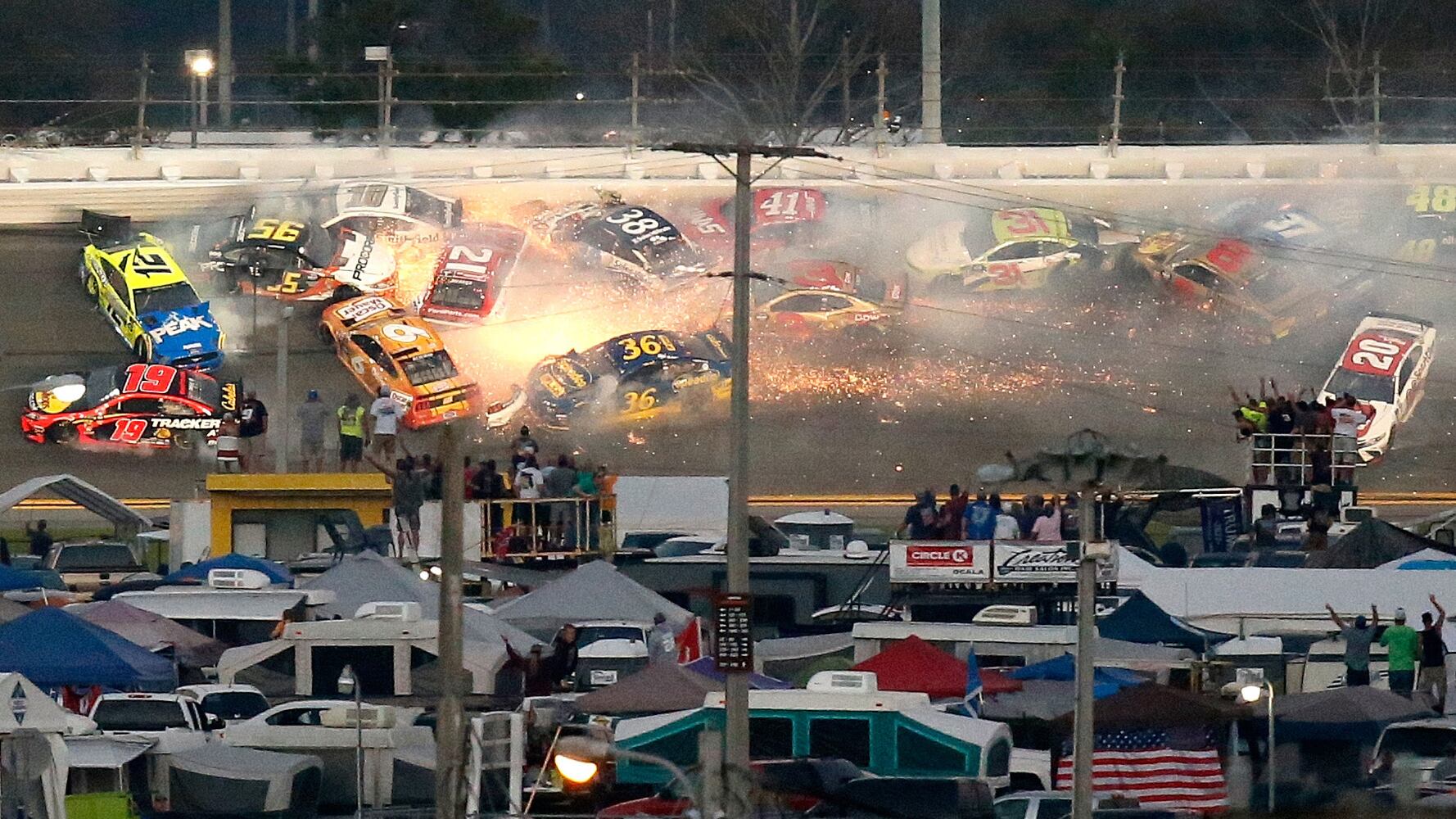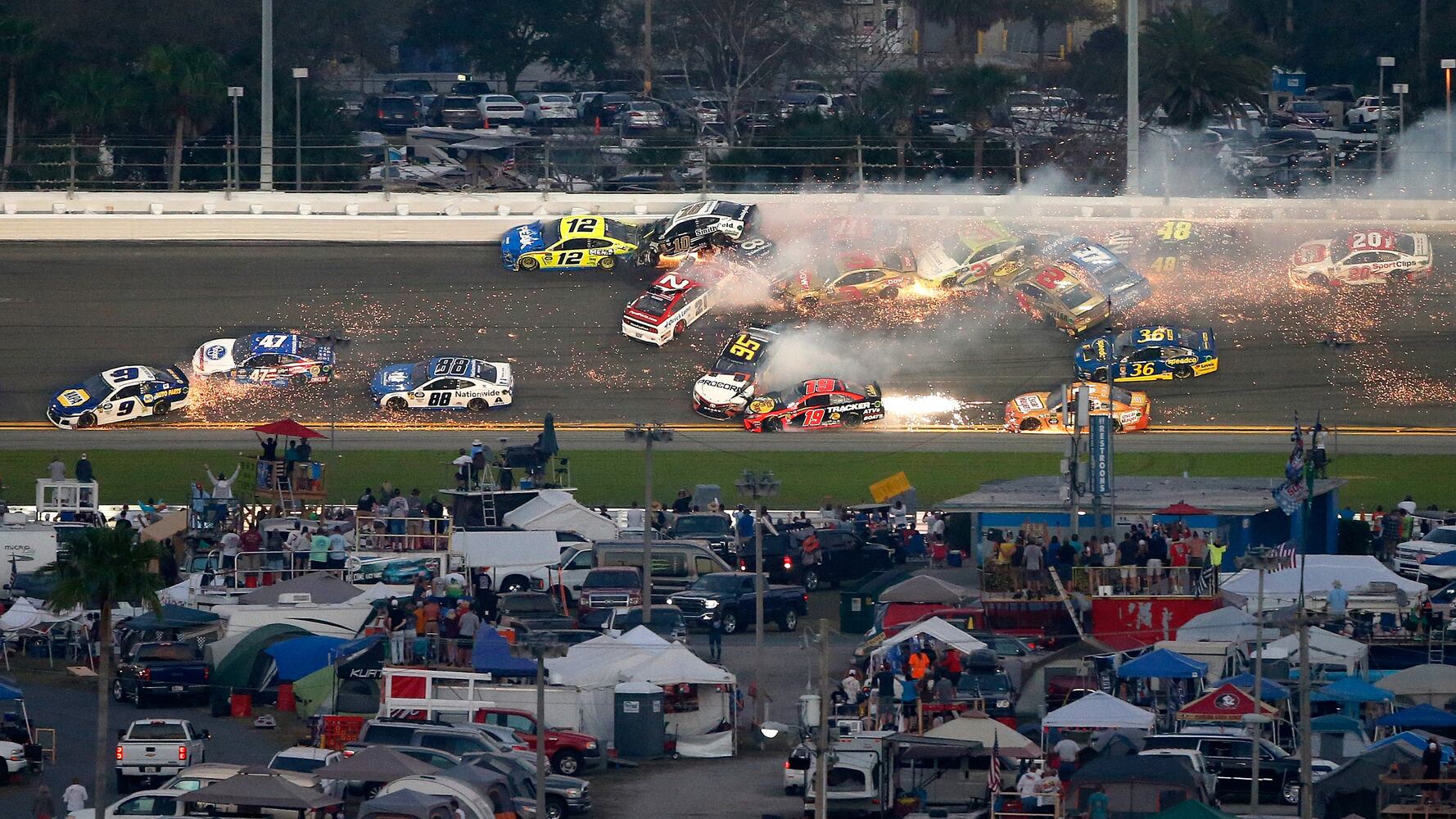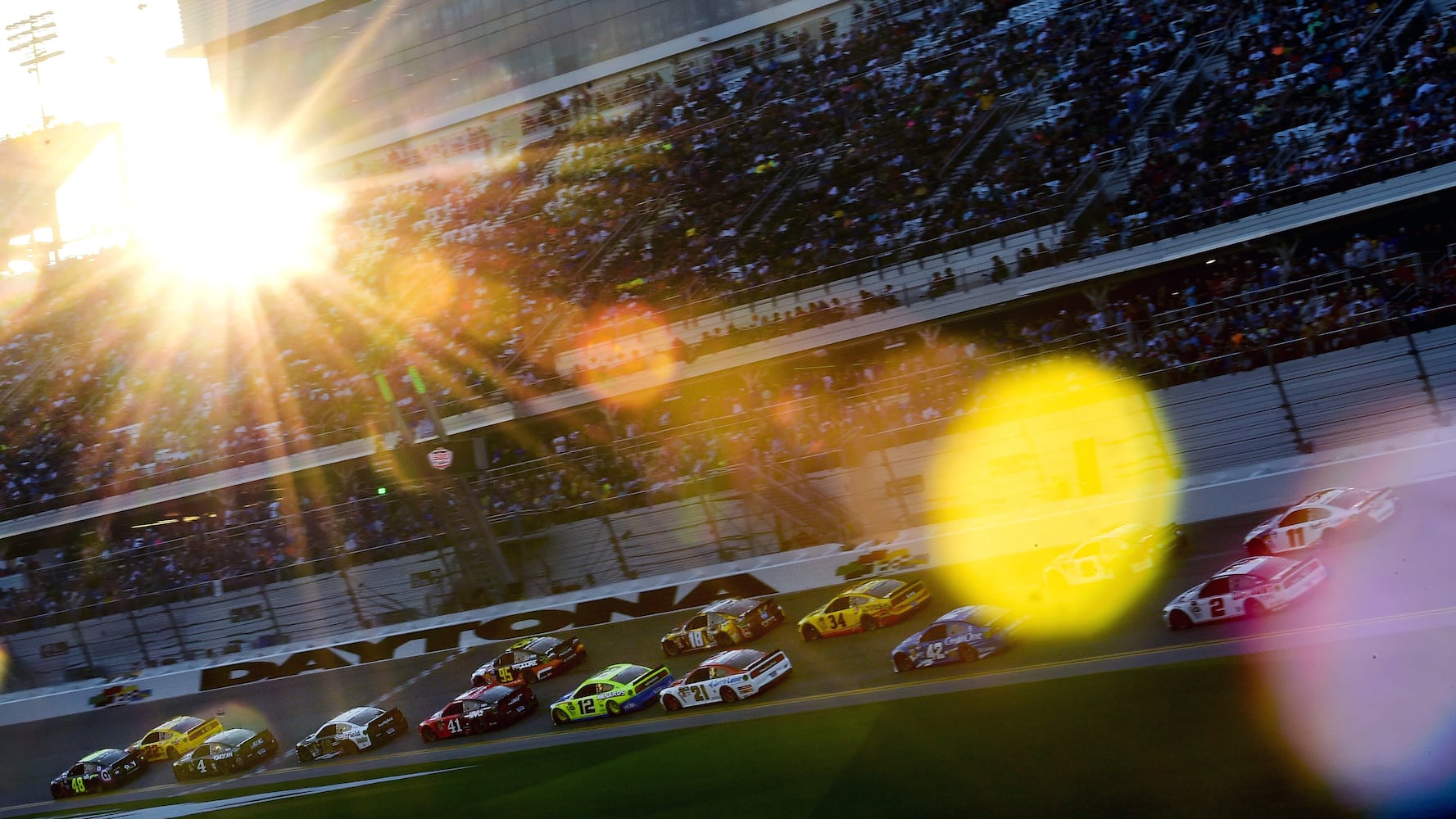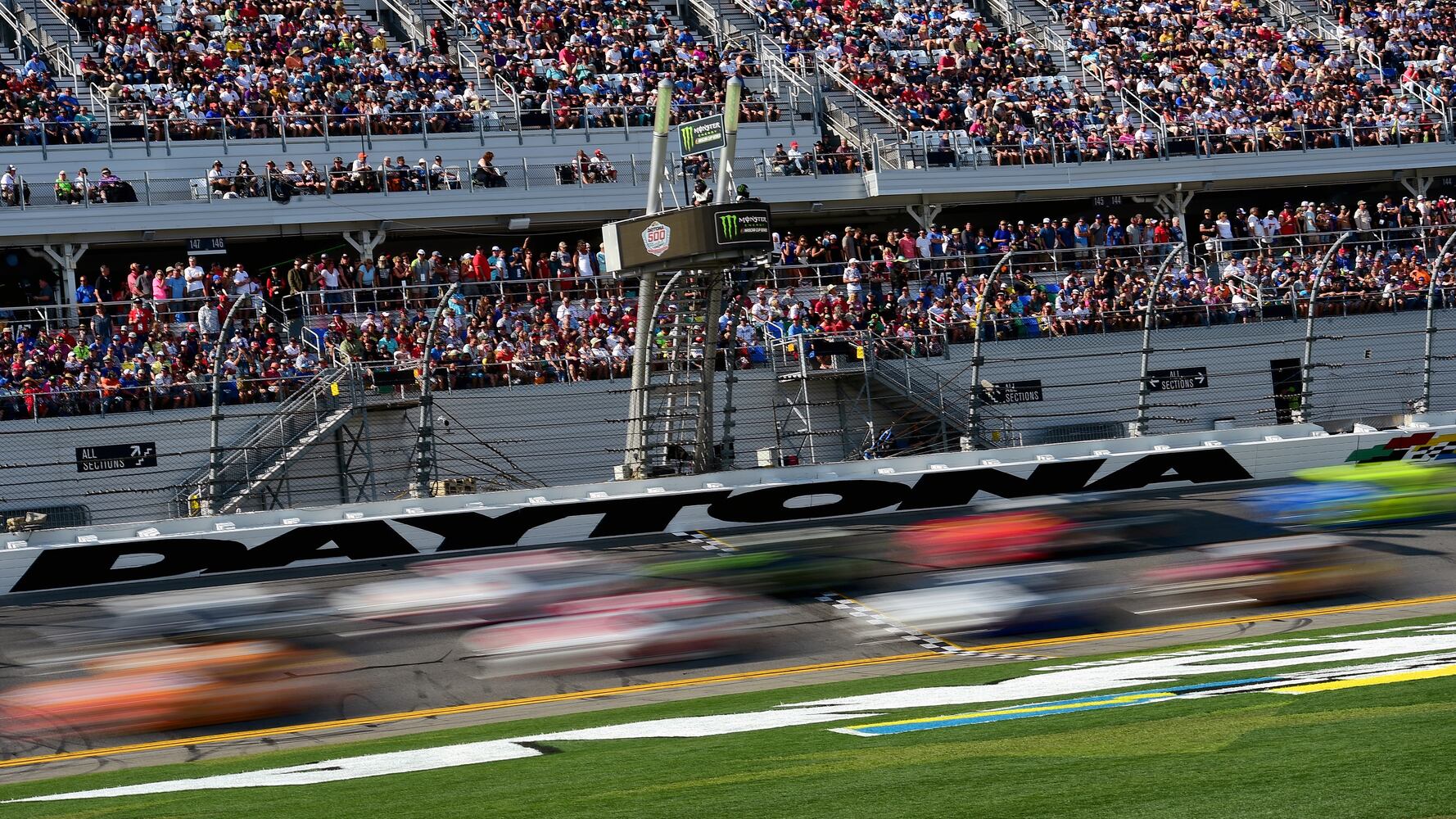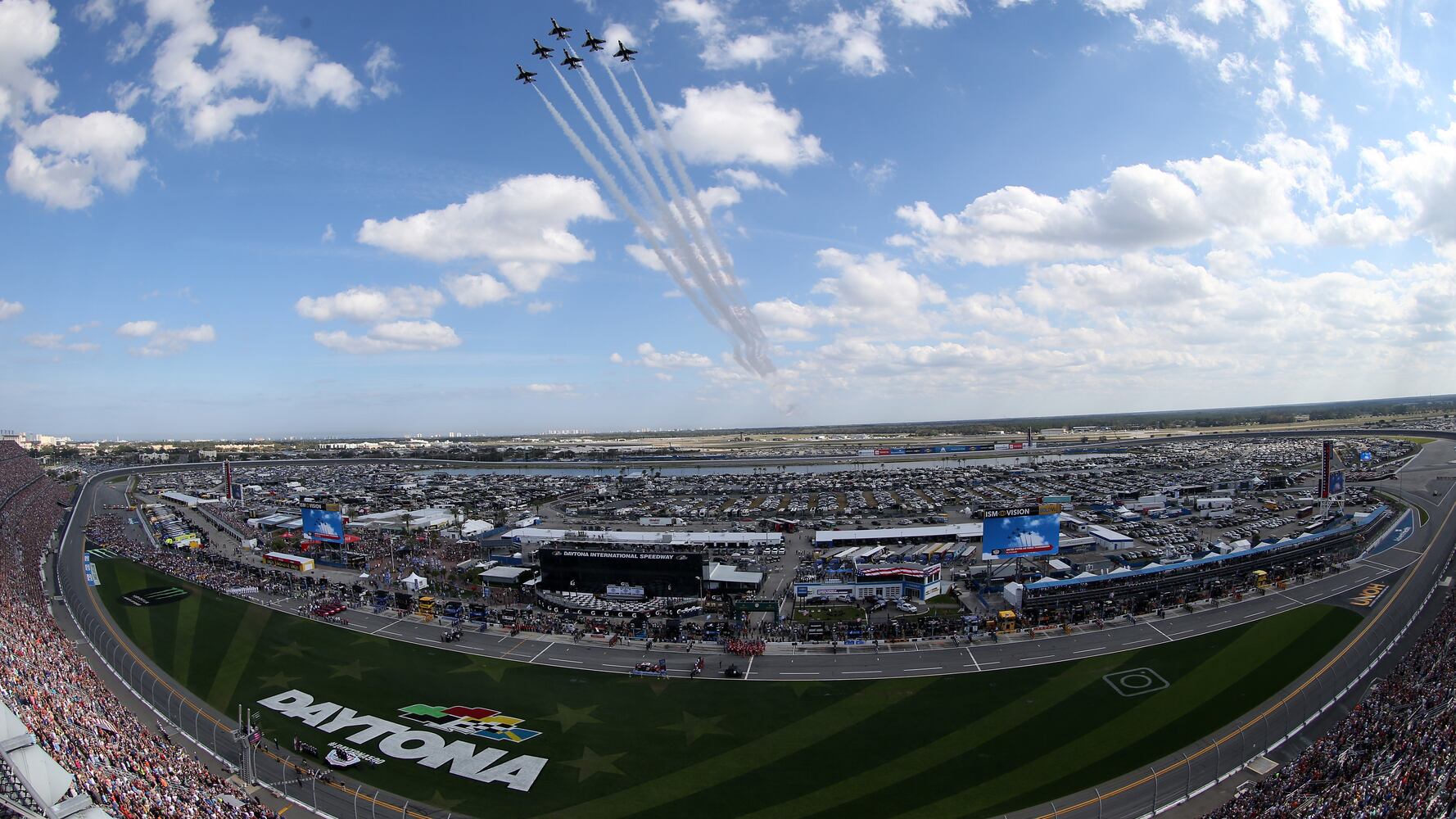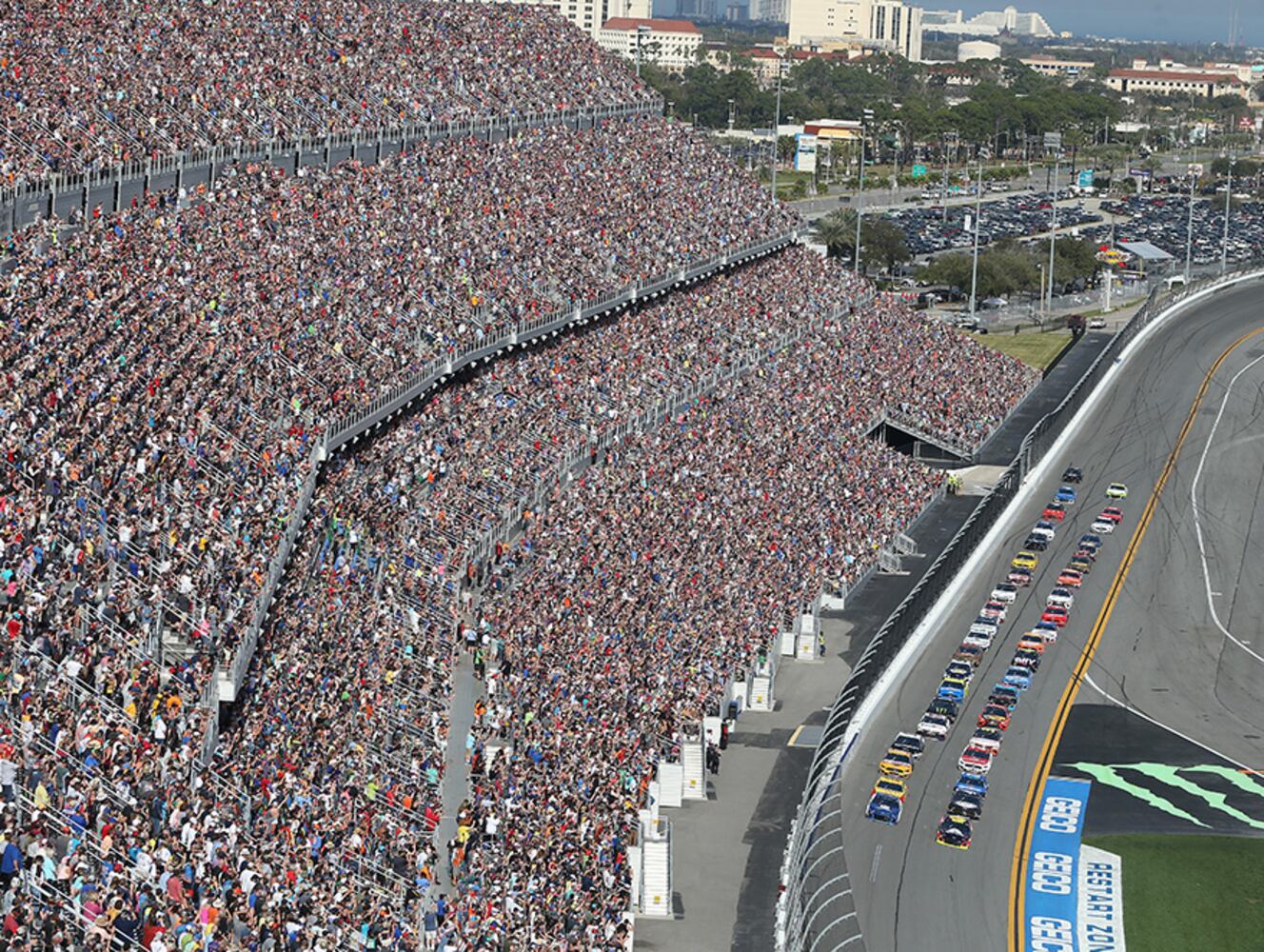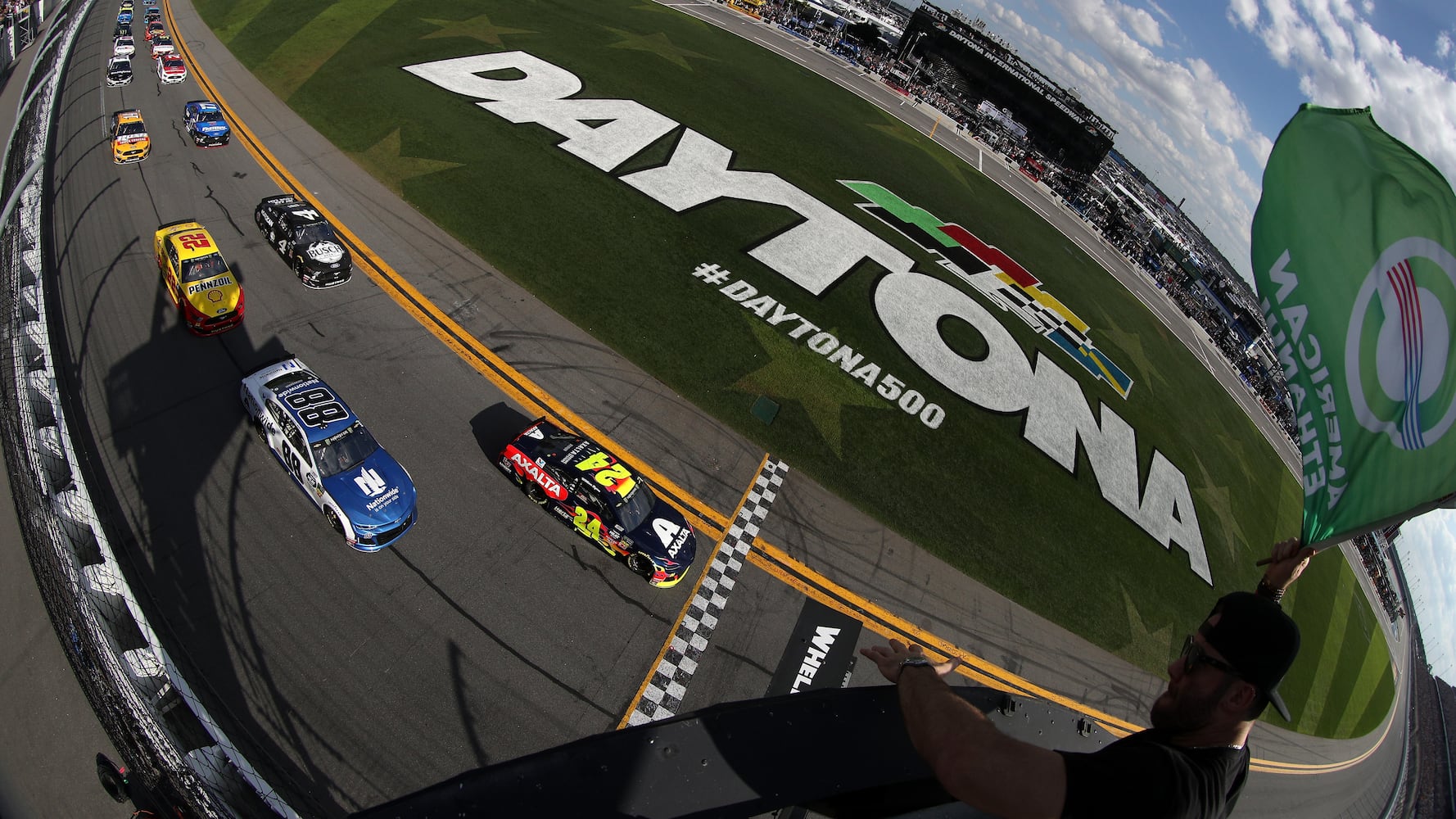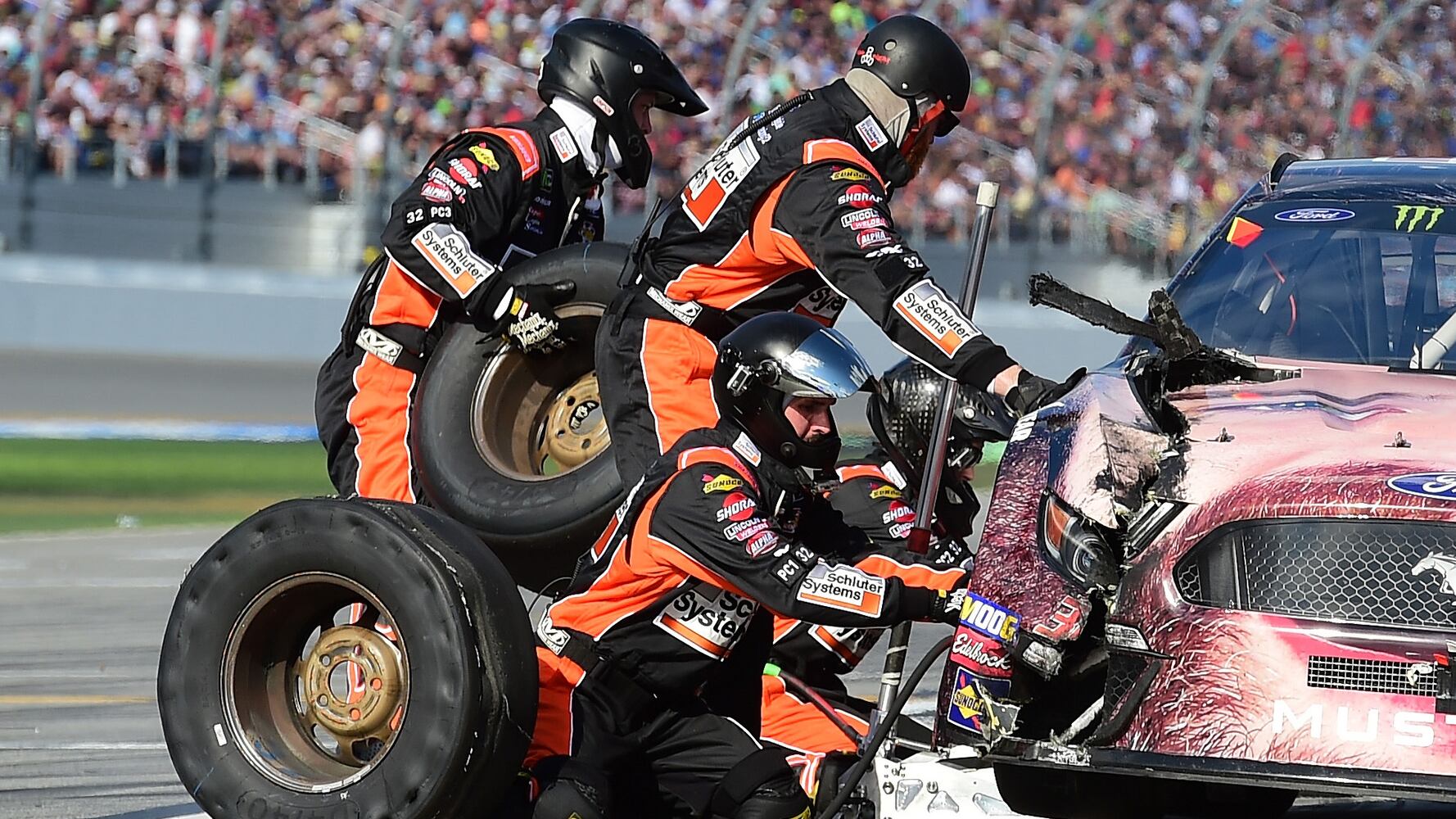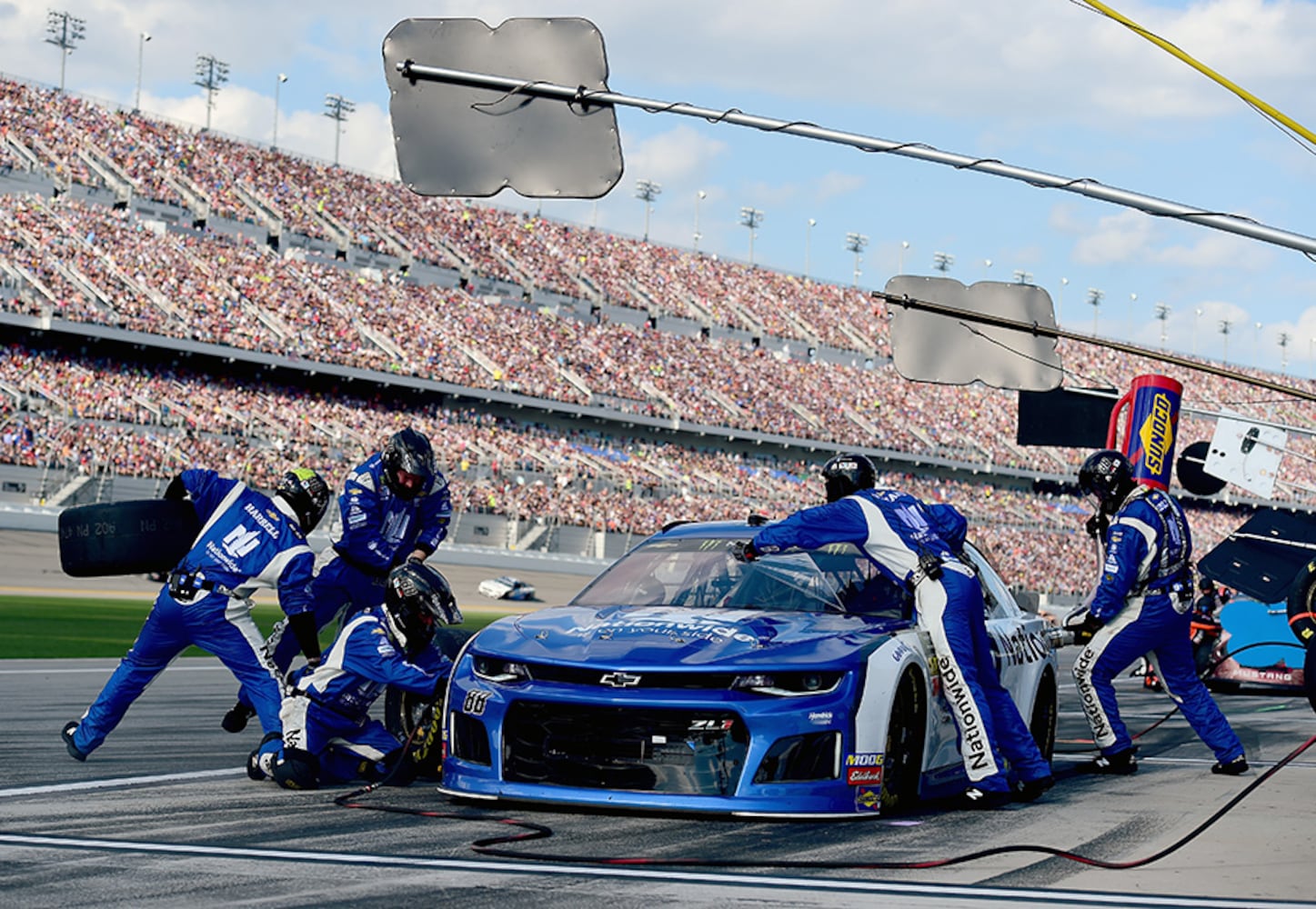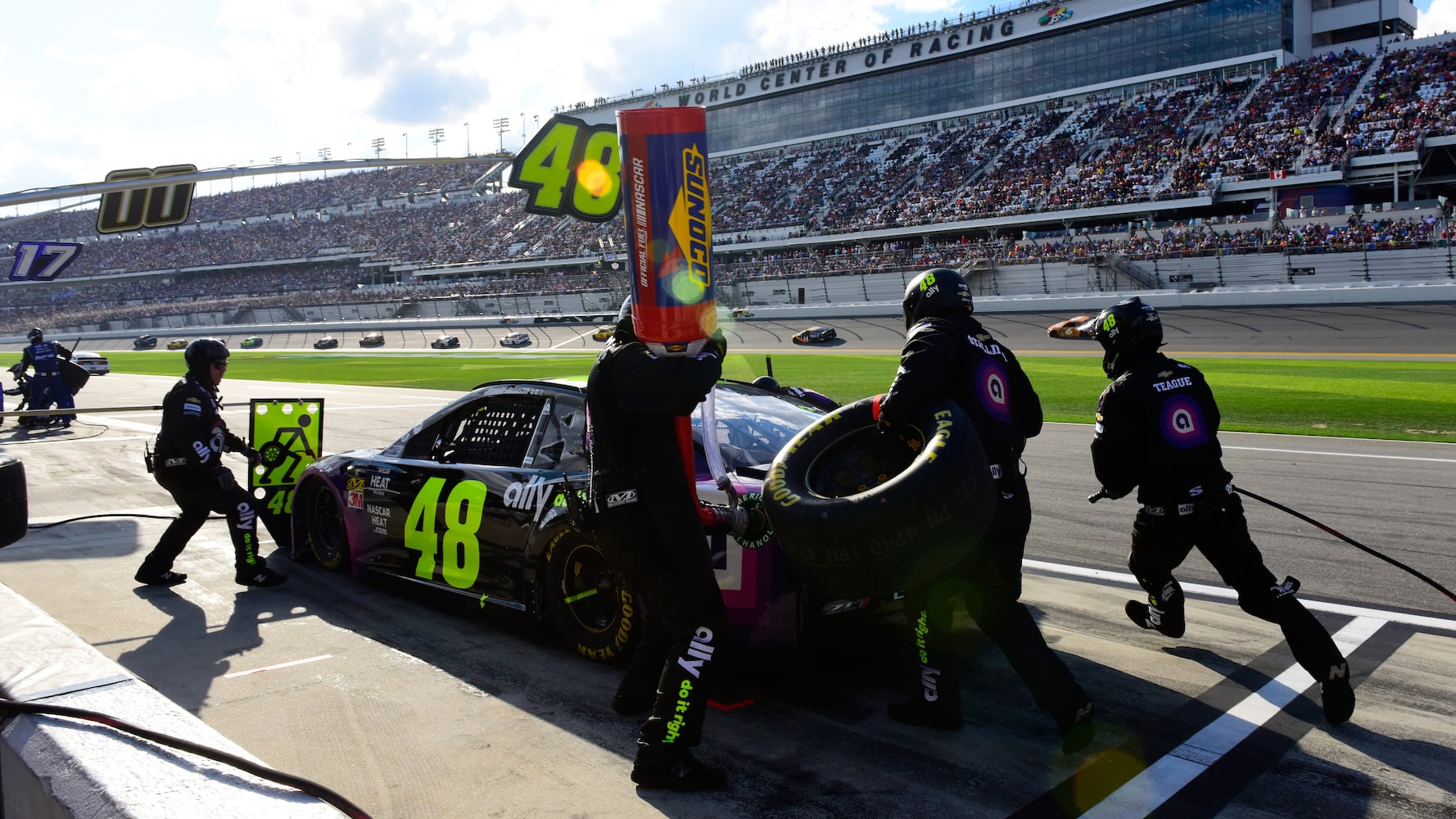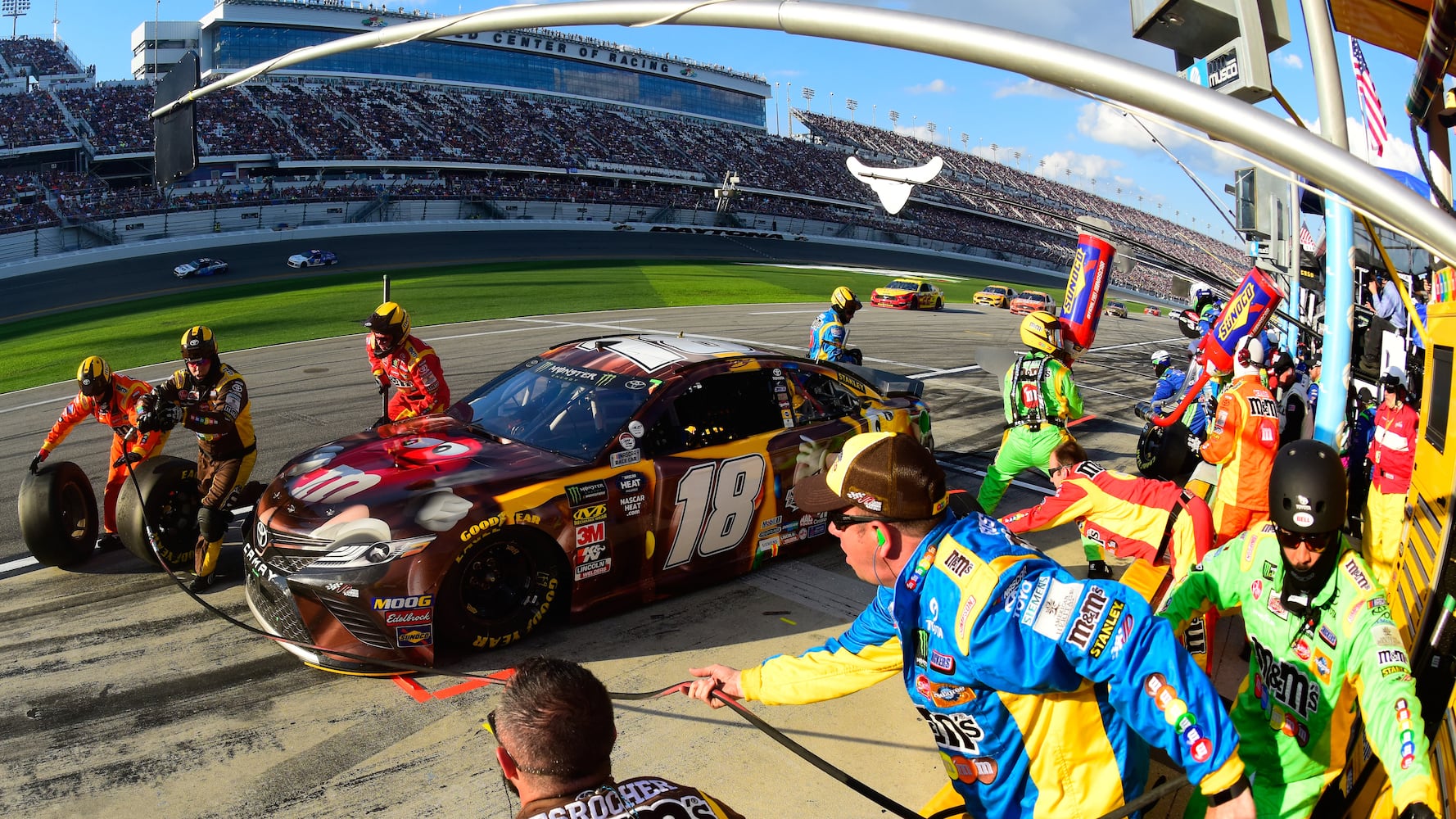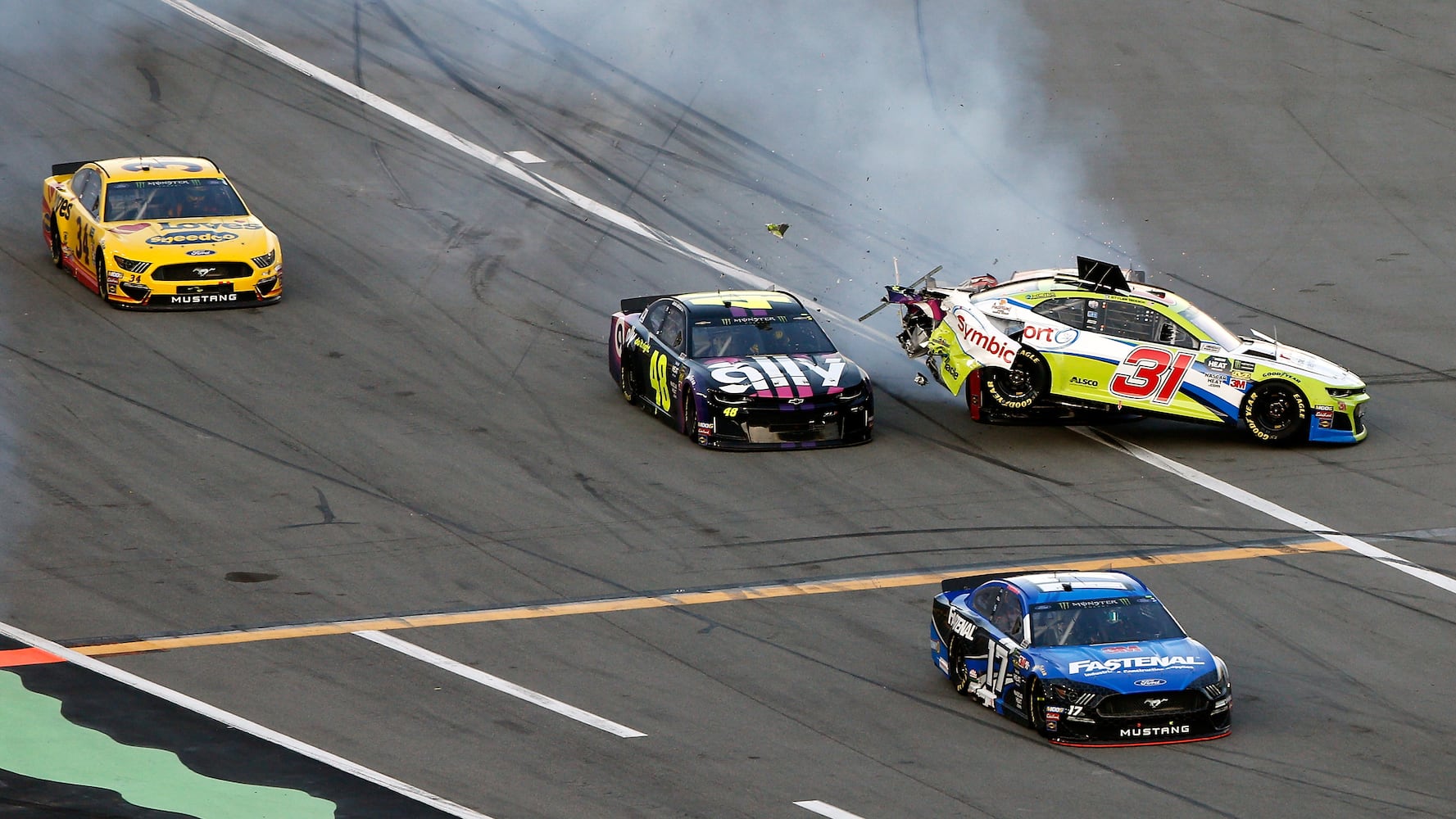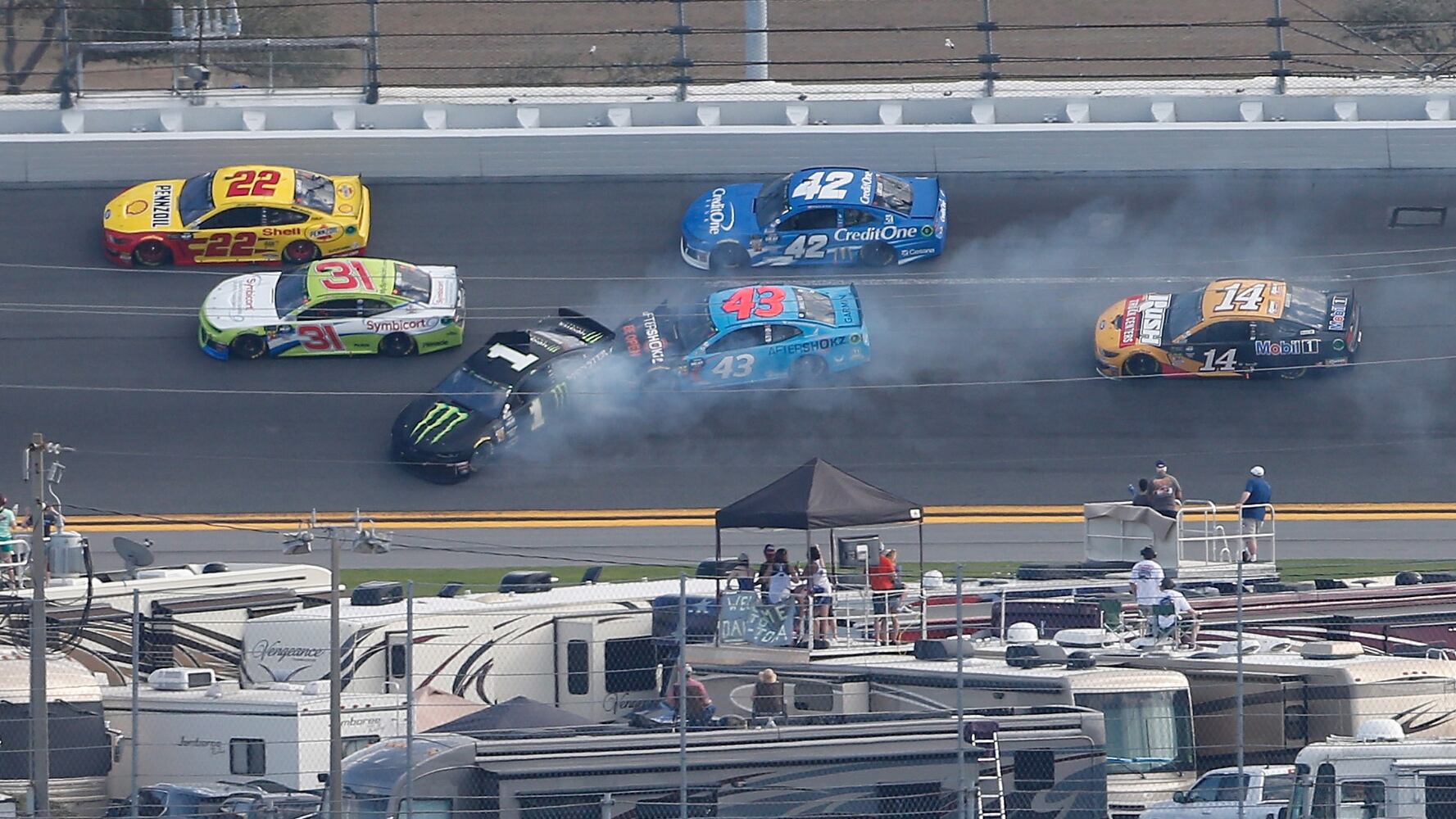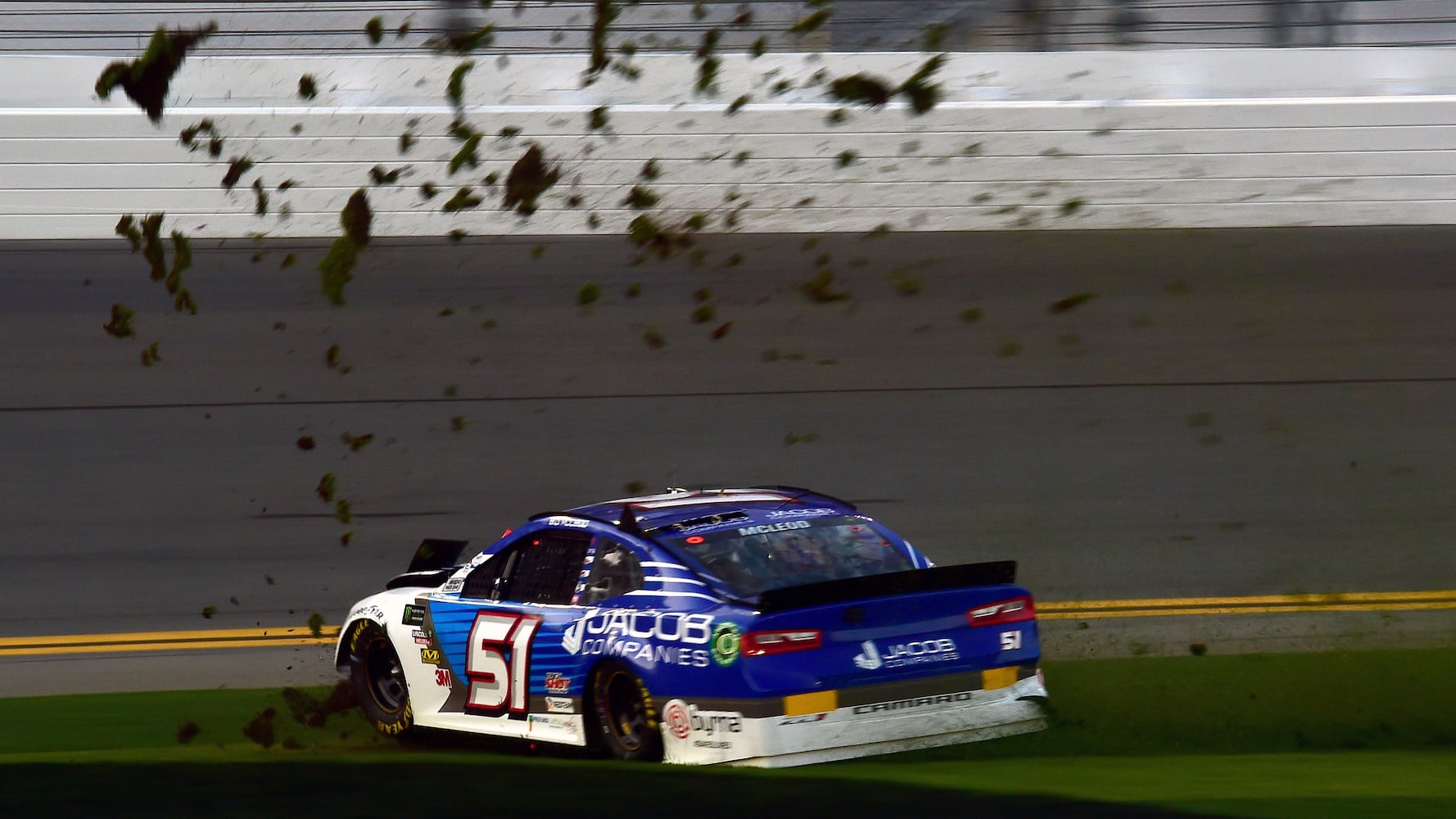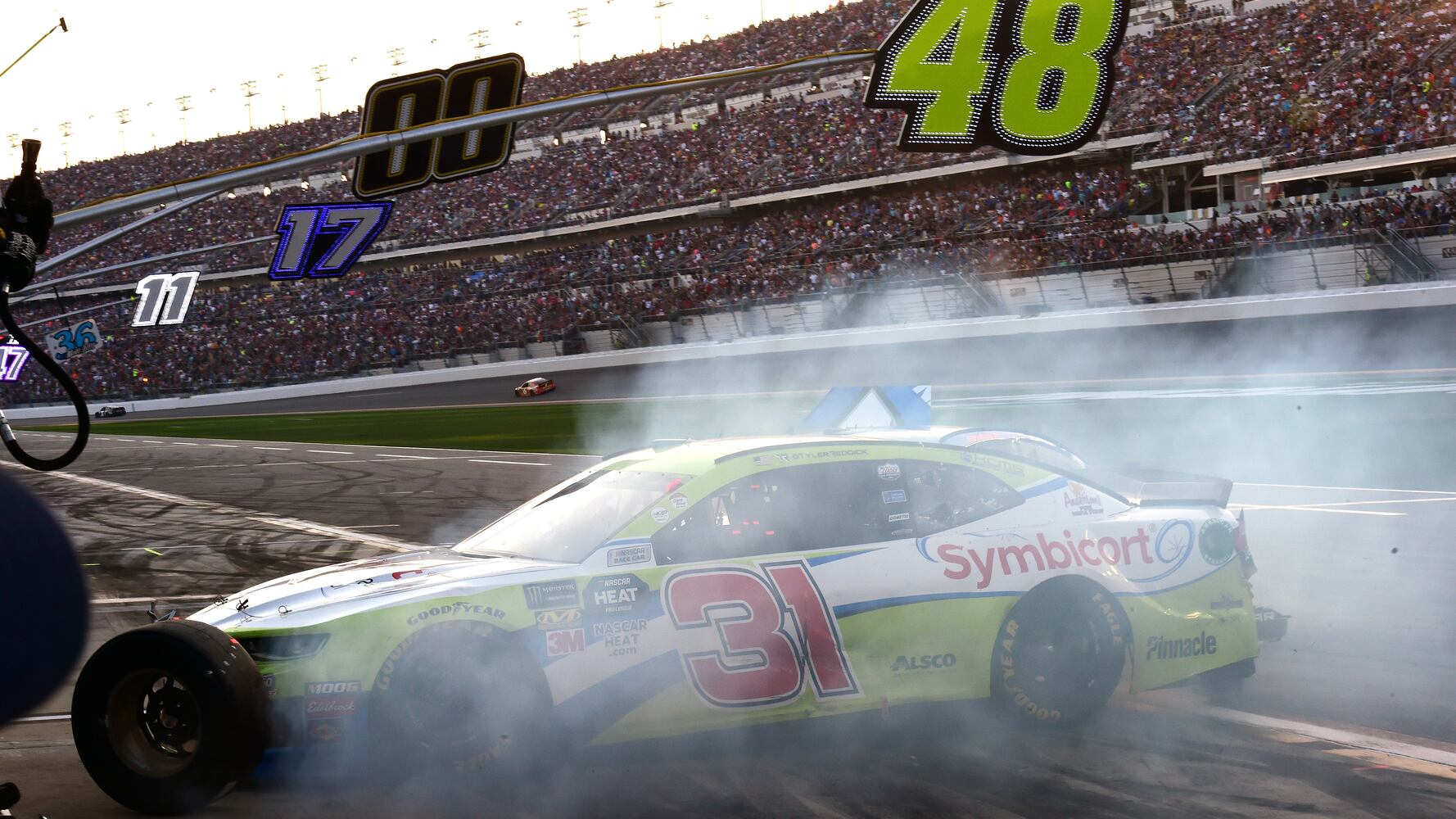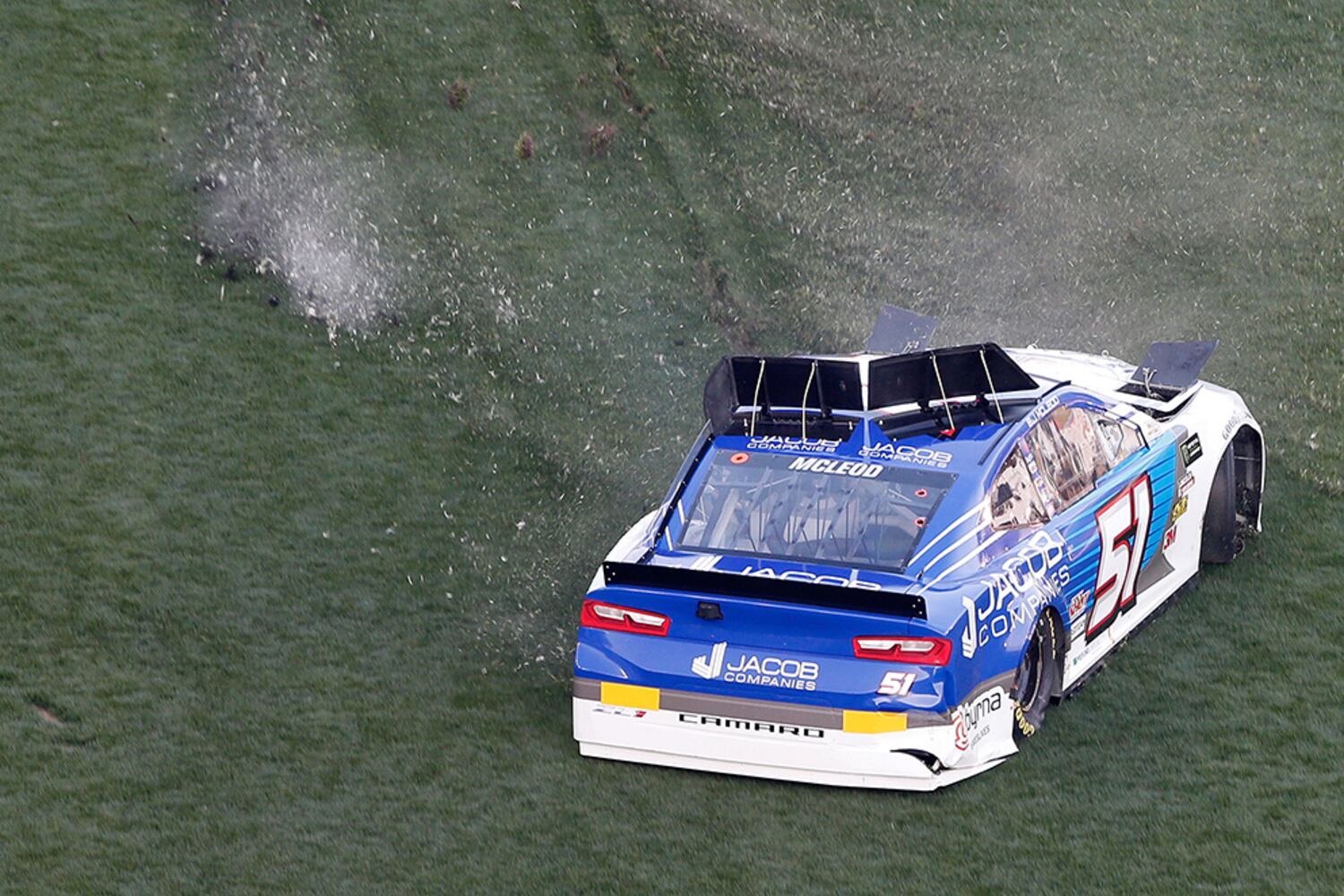There were two big winners at Sunday’s Daytona 500. Foremost was Denny Hamlin, who jumped to the lead in a two-lap “overtime” sprint to the finish, and stayed there, to claim a deeply emotional victory for he and his team owner, Joe Gibbs.
In a close second would be any ambitious northeastern Florida scrap metal dealer.
Three big wrecks over the final 10 laps blurred the line between race-car driver and stunt driver and hollowed out the field of the Great American Race that pretty much came down to a last-machine-standing kind of deal.
“We were always one row ahead of the mayhem,” Hamlin said.
There would be a powerfully sentimental backstory emerging from Victory Lane, as Hamlin raced for the late son of his team owner. J.D. Gibbs, a co-founder of the race team and once it’s chief executive, died last month at 49 after a long illness described as a neurological disorder. He initially discovered Hamlin running a late model car on a North Carolina short track and helped usher him into a career that now includes 32 Monster Energy Cup race wins as well as the 2016 and ‘19 Daytona 500 titles.
Only fitting, then, that Hamlin bore J.D.’s name and his favorite number (11) on the winning car.
“This one is for J.D.,” Hamlin said upon exiting the car.
“What happened is emotion for all of us,” owner Joe Gibbs said. “I’m emotionally shot. What happened here is unreal. I think J.D. had the best view of everything.”
How much did Sunday mean to the 78-year-old Gibbs? Well, the man has won three Super Bowls as the Washington Redskins head coach. He’s in the Pro Football Hall of Fame. As a race team owner, he has won four NASCAR series championships, and three other Daytona 500s.
And yet he classed Sunday as, “the most important, biggest win I’ve ever had in my life.”
“It’s the most important night of my professional life,” he said by way of underscoring.
It was a Gibbs sweep of the first three positions. Unable to make a final run on his teammate, Kyle Busch, still anxiously seeking his first Daytona 500 win, finished second. Just behind in third was fellow Toyota driver Erik Jones.
“At least we got a JGR car in Victory Lane and that’s what matters,” Busch said.
Credit: Sean Gardner
Credit: Sean Gardner
As for the racing itself, welcome to Revenge of the Restrictor Plate. Sunday was the last outing for the innocent looking little slice of metal that bunched up cars like marbles in a bag and helped create havoc on the superspeedways of Daytona and Talladega since 1988. Replaced after this race by a more modern speed-baffler, the plate was in a vengeful mood.
Basically, the first 475 miles of Sunday’s Daytona 500 was a warm-up, calisthenics at 190 mph, the world’s longest prologue.
Then it came time to actually run to win, this crucial juncture of the race preceded — as it so often is here — by showers of sparks and billows of smoke and sheet metal more twisted than the plot of the X-Files.
Where there would be one winner, when they could finally squeeze in a couple laps without incident. There would be many more instigators.
First it was Paul Menard who supplied the powder for a wreck that caught up more than half of the 40-car field with 10 laps left. He pushed Matt DiBenedetto up into the wall and sent a spinning vehicle into the masses. Twenty-one cars were involved, often spectacularly. At one point, Unadilla’s David Ragan was all turned around, wearing another car like a grotesquely oversized hood ornament.
Then before anyone could really get up to speed on the restart, Ricky Stenhouse Jr. tried to carve out some room in the middle of the track where there was no room, setting off another wreck.
“Brains come unglued,” Busch said, describing the finish of a race like this.
And finally, Clint Bowyer pulled up into Michael McDowell, and more screeching and sparks ensued. That one ultimately eliminated, among others, Dawsonville’s Chase Elliott. While he ran with the lead group early Sunday, Elliott was not much in the conversation for the second half of this long race. He finished 17th.
“We crashed, I think, four or five times and they finally finished us off,” Elliott said. “It’s crazy what these things come down to. Just survival. It’s crazy.”
Only 19 cars were running on those final two laps — just 14 on the lead lap — and none of those other 18 were able to really challenge Hamlin.
Forty years ago here they stoked a national curiosity about roughnecks in fast cars. The 1979 Daytona 500 holds a special place in the history of stock car racing, thanks to Cale Yarborough and the Allison brothers throwin’ punches, kickin’, cussin’ and swingin’ helmets — going all UFC decades before cage fighting was cool.
Just so happened that their fight, touched off by a last-lap crash between Yarborough and Donnie Allison, collided with the first-ever national telecast of NASCAR’s biggest race. Nothing like a good bar brawl to build an audience.
They are still crashing at Daytona all these years later. Bigger and more spectacularly than ever. But despite ample provocation, no one threw so much as an angry glance.
They just politely picked up the pieces and prepared to move on to Atlanta in a week.
About the Author
